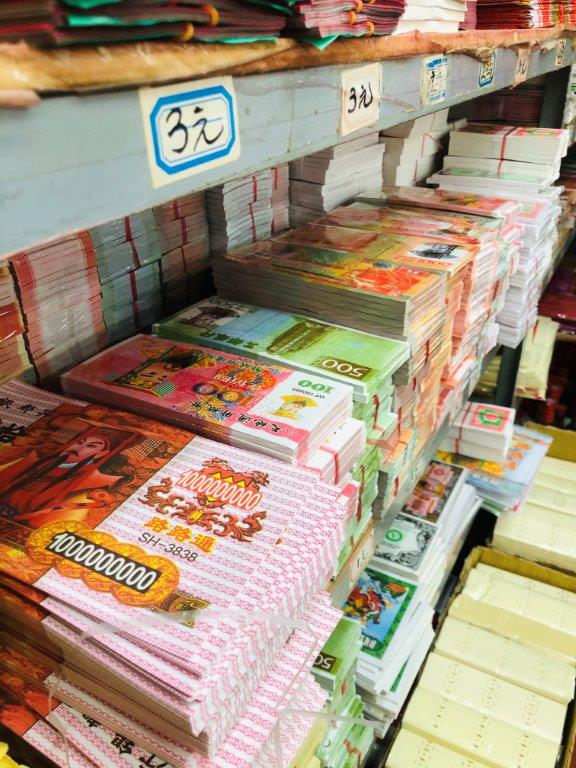Ching Ming Ancestor’s Food Deliveries

Tomb sweeping during Ching Ming Festival and returning hometown worship family’s ancestor; Is one of the most important customs and traditional activities for most Chinese in Macau. Since majority of Macau resident’s ancestors originate from Mainland China mainly; thus most seniors and young generations need to go back their hometown for worships during Ching Ming Festivals each year. Ching Ming Festival always came across with Macau Easter statutory holidays; Hence the special “Tomb sweeping trend” thus formed each year. Most traditional Ching Ming culture is still vigorously and well sustained till now; and the core values of ancestor’s remembrance cultural beliefs still maintained orderly in a way. Most young generations still follow their past worship journeys with their family every year.

Ching Ming Festival not only just happened in Macau; but also Chinese from other nations to celebrate this traditional festival in other countries. It has an important search of local cultural values we have now. It also clearly proven the significance of most chinese ancestors seniority respects; filial piety and other family beliefs of traditional virtues and other social ethical core values stays in each chinese minds.
Ching Ming ritual supplies
The custom of Ching Ming refers to fifteen days after the “Vernal Equinox”; it mainly focuses sweeping tombs and worshiping ancestors, festive outings, and prohibit using fire to cook meal of the day. Sacrificial articles include incense candles, joss money, suckling pigs, fruits, wine, etc. Addtionally during ancestors and tomb sweeping process, there’s also a common customs back in time like; the flying kites moments and hanging willow tree branches up at home.

As the above name suggested, “clothing paper” refers to clothes made of paper. Although the ancestors not on mother earth anymore, they still have daily necessities requirement. However, these tradiitonal was not the first thing to know about it; and this invention was brought up only from the Han Dynasty onwards.
Speaking of burning clothes paper
History can witness the emergence of “terracotta warriors” from the Zhou Dynasty. The most popular terracotta warriors and horses from Chun Chi Wong; the first emperor of Qin Dynasty, turned to be the most common funerary items. Absolutely the emperor can have it at its own will; but speaking of ordinary people, it is almost impossible to own it at will. Also mentioned from the Han Dynasty, a large number of murals and artworks found in the tombs of the ancestors; It also indicated how the ancients paid so much attention to the death of their ancestors; worrying about not having enough daily necessities, and acted of filial piety.

Till now witnessed in the streets of paper-made worshipping items most people utilising, has lots of good reasonsings behind. The raw materials used are light, whilst the price is fairly reasonable and yet, the production process goes quite flexible; and rich in color. The requested products can be ever-changing. From ancient start using rituals and oil paintings uses, till now moved to three-dimensional paper binding supplies; It all kick started with flat-out designs to current three-dimensional items; through process of trimming and pasting. Whatever we can see from our daily lives are also available on the rack, everything requested is ready. Such intangible cultural heritage craftwork “Paper Art” art piece, is what we called “The paper-made clothing”.
Some idea about gold and silver burning paper for ancestors
Burning clothing paper has different meanings ways of doing it during different festivals. For example, during Ching Ming Festival on the 8th day of March every year; filial sons and grandchildren must bring good food and clothing paper to the cemetery; and pay homage to the ancestors to show respect and sorrows. In addition, the current clothing paper also has banknotes and various styles; Truly believed by burning these items would deliver the ancestors favorites; which can satisfy their wishes during their lifetimes after death, and comfort the hearts of persons on earth.

According to the traditional customs from past generations; the death of beloved one does not mean their family member is entirely deceased. Later generations can remember their ancestors through burning sacrifices. In the past, people would bring “three sacrifices” namely; roasted meat, chicken, fish, gold and silver; and spirit money; bring them all to the cemetery for their ancestors during worship ceremony. Filial sons and grandchildren will bring different kinds of food and various clothing papers till now. After the sacrifice, everyone would share the sacrifices and food, which is also one of the family activities.
And too, the clothing paper nowadays also have various kinds of bank notes to choose from; all followers believed by burning some of the ancestor’s favorite items, surely will satisfy their past life’s wishes, allowing families heart on earth get blessed and felt with harmony.

The eye-opening burning Paper shop
Quite fortunate grab a good chance this year; stepping into one of the most famous paper burning store in the neighboring Northern Districts with my family member; getting ready for this year’s Ching Ming worshipping item preparations. Explored not only those luxurious cars and western-style paper buildings for sale, but also domestic helpers to choose from. This year also have launched nicely packed food items. Rests like Red wine, Siu mai dim sum platter, Claypot rice, Bird’s nest and Abalones, Sashimi and Sushi; and even packed junk food items are available on the rack. Other various kinds of bread and desserts packs, exquisite three dimensional cake packaging, etc are also available.















This year also promoted an “upgrade” gift series, including not only electronic items; but also electronic cars, household common items, electronic mahjong tables, rice cookers, etc. The average consumption is about $300 to $400. Believe majority would like their ancestors to enjoy a luxurious life after death; and willing to spend thousands of dollars buy those paper apartments, big houses with cars; and thick stacks of various banknotes types (in big value), to choose from.








